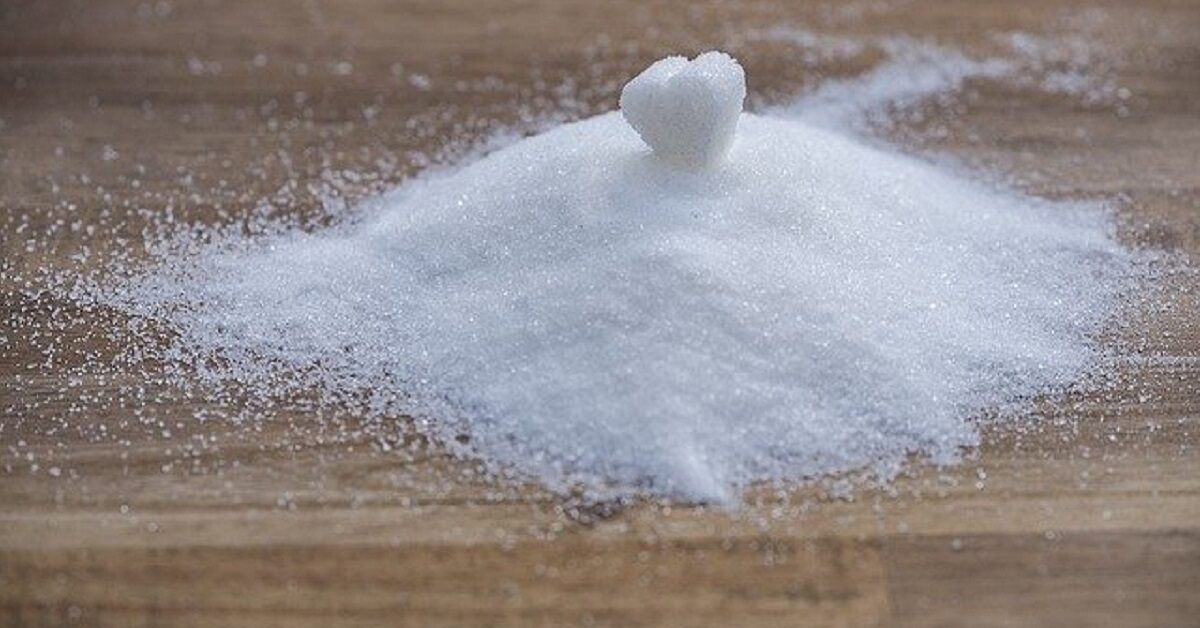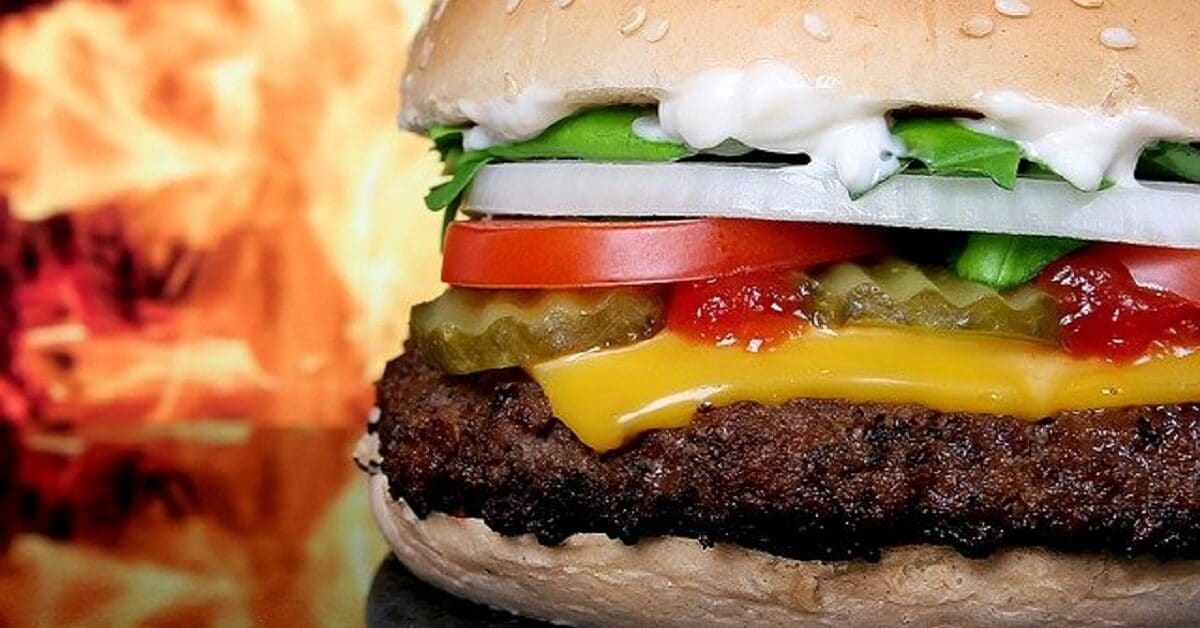
Foods that have very little or no nutrients besides added sugar and solid fat-derived calories are said to contain empty calories.
Nutritionists consider empty calories unhealthy and advise health-conscious people to avoid them. But you need to know what empty calories are to avoid eating them. You also need to know how to identify foods containing empty calories.
Poti and colleagues (2014) identified empty calories as added sugars (sucrose and high-fructose corn syrup) and solid fats (saturated fats and trans fatty acids). According to the authors, solid fats and added sugars are described as empty because they contribute calories without essential nutrients. The authors recommended discouraging increased consumption of empty calories because they displace healthier nutrient-dense foods and increase energy intake beyond needs.
[Note: See HHS/USDA’s updated (2020-2025) Dietary Guidelines for Americans (DGA) here.]
Solid fats are unhealthy because they are associated with an increased risk of cardiovascular diseases (Schwingshackl et al., 2018). Added sugars (caloric sweeteners added to food during processing) increase the risk of overweight, obesity, and cardiovascular diseases (Faruque et al., 2019).
This article answers all your questions about empty calories, what they are and how to identify them. We also provide a list of foods that contain empty calories.
[calorie_calc id=”10193″]
Contents:
Calories: What you need to know
How processing creates foods with empty calories
Processing foods depletes fiber content
Why empty calories are bad for you
Foods to eat instead of empty calories
Calories: What you need to know

Calories refer to the amount of energy in food and drink. Energy is released when your digestive system breaks down or metabolizes food and beverages for absorption and utilization. Calories are the units for measuring the energy released when your body metabolizes foods and beverages.
Natural foods contain calories, but some more than others. Eggs, for instance, have about 147 calories per 100g, bananas 88 calories/100g, and apples 52 calories/100g.
The amount of calories in a food or beverage depends on the fats, carbs, or protein it contains. Foods rich in fats yield the highest calories.
Fats contain 9 calories per gram, while carbs and protein yield 4 calories per gram.
Carbs are the body’s choice source of fuel because they rapidly metabolize to release energy. The body does not usually rely on protein for energy. However, when you are not getting enough carbs and fats, such as during fasting or starvation, your body may begin to break down more protein to supply energy.
Carbohydrates and fats are said to have a protein-sparing effect, meaning that an adequate supply of these nutrients prevents your body from using protein as a source of energy.
Calories consumed in excess of daily need are converted to fat and stored in the body. Thus, excessive intake of calories leads to weight gain, overweight, and obesity over time.
Energy, measured in calories, is essential for the survival of biological systems. Your body metabolizes its glycogen and fat stores to release energy to fuel daily activities (non-exercise activity thermogenesis, NEAT), sports-like activity (exercise activity thermogenesis, EAT), and physiological functions that occur even when you are at rest.
Physiological functions that utilize energy at rest include breathing, heartbeat, blood circulation, digestion, and body temperature regulation. Others include the maintenance, nourishment, growth, and repair of cells, tissues, and organs.
Physiologists have different measures of energy expenditure at rest.
Basal Metabolic Rate (BMR) refers to the rate at which a healthy subject expends energy while resting in a neutral environment (thermal neutral zone) after the digestive system has been inactive for at least 12 hours.
BMR is measured in the morning after the subject has rested and fasted overnight (for at least 12 hours), is free of emotional stress, and has not exercised for 24 hours (McMurray et al., 2014).
Taking BMR in the morning after at least 12 hours of fasting ensures that the thermic effect of food (TEF) is not included in the measurement.
TEF is the increase in energy expenditure after ingesting food. It is the energy your body expends during digestion, absorption, metabolization, and utilization of ingested food.
Similarly, measuring BMR after the subject has rested for 24 hours and is adjudged free of mental and physical stress ensures the exclusion of energy expenditure due to emotional stress and physical activity.
Resting Metabolic Rate (RMR) is similar to BMR. The difference is that measurement takes place under less precisely controlled conditions than BMR.
According to Compher and associates (2006), researchers have taken RMR under different conditions. But generally, subjects who have engaged only in the mild activities of daily living need a rest of less than or equal to 20 minutes before measuring commences. Subjects who may have engaged in vigorous physical activities need to rest some hours before measurement starts (the authors did not specify exactly how long).
Subjects should also refrain from eating, taking alcohol, nicotine, and caffeine several hours before measurement. Murray and associates suggested that in the case of RMR, measuring should start at least 12 hours after exercise and eating.
Foods with empty calories

Foods (and beverages) with empty calories have high added sugar content and high solid fat content but little or no protein, vitamins, minerals, healthy antioxidants, and phytochemicals.
Although calories are an essential component of a balanced diet, foods that supply calories without the complementary essential nutrients are unhealthy for several reasons.
You can identify such foods by looking at their nutrition facts labels. Look at the ingredients list for added sugars and solid fats. Then look for information about the nutrients the food product contains, the levels of the nutrients, and Percent Daily Values (%DV) to assess the food’s nutrient density. Foods high in calories but with only a few essential vitamins and minerals have empty calories.
Below is a list of processed foods considered to contain empty calories:
- Sucrose, glucose, brown sugar, cane juice, high-fructose corn syrup, agave syrup, and molasses
- Candies and sweets: Sugary candy bars, sugar-based sweets, such as caramels, gummies, licorice, bubble gums, chocolate bars, and chips
- Sugar-sweetened beverages, such as carbonated drinks or sodas, sugar-sweetened coffee beverages, iced teas, energy drinks, sports drinks, fruit juices (orangeade, lemonades with added sugar)
- Confectioneries include sugar-sweetened pastries, pies, donuts, rolls, cakes, cookies, croissants, and pancakes that may have added solid fats
- White pasta, white bread, foods made out of highly refined grains, seeds, and cereals
- Fast foods such as burgers, pizza, french fries, pizza, and potato chips
- Highly processed fats and oil
- Processed meats, such as sausages, hotdogs, bacon, and ribs
- Some full-fat dairy products, including cheese, butter, shortening, milk desserts, such as milkshakes and ice-cream
- Some sugar-sweetened breakfast cereals and cereal bars
- Condiments and dressings, such as ketchup, mayonnaise, and barbecue sauce
- Maple syrups, honey, and jam
- Alcohol and most alcoholic beverages
How processing creates foods with empty calories

Most natural foods contain nutrients that complement their calorie contents. Empty calorie foods and drinks are often highly processed foods and beverages with sugars, fats, and sodium artificially added.
Processing often involves stripping foods of their naturally-occurring vitamins, minerals, fibers, and antioxidants, while adding refined sugars, carbs, and fats.
Sugars, fats, and carbs are added to foods to improve palatability. Children and teenagers are especially susceptible to craving foods with lots of sugar added.
Refined grains (such as wheat) have had their fiber content removed. Stripping foods of fiber imparts a fine texture that makes the food more palatable. Improved palatability encourages people to consume more.
Whole grains (unrefined grains) consist of bran, germ, and endosperm.
Bran is the outer layer of the seed. It is rich in fiber, B vitamins, and minerals (iron, copper, zinc, magnesium, antioxidants, and other health-promoting phytochemicals).
The germ is the part of the seed that grows to produce a new plant. It is rich in nutrients, such as B-complex vitamins, vitamin E, healthy fats, and antioxidants.
The endosperm is the part of the seed that supplies the nutrients that nourish the new plant emerging from the germ. It is also rich in carbs and proteins but less nutrient-dense than the other layers.
The information provided above about the structure and distribution of nutrients in grains makes it easier to understand why processing whole grains, such as wheat, by removing the bran and germ (leaving only the endosperm) strips them of valuable health-promoting nutrients.
Processing foods depletes fiber content

Processing foods to remove their soluble fiber content may increase glycemic index.
Glycemic index (GI) measures the relative ability of a food item containing carbohydrates to increase blood sugar or cause blood sugar spikes after being ingested. The measure of GI is an important factor for people trying to control their blood sugar levels. Fiber (especially soluble fibers) helps reduce the glycemic index of foods by slowing down the digestion and absorption of carbs. Without the complementing fiber, carbs and sugars tend to be rapidly digested and absorbed into the bloodstream, causing a pronounced spike in blood sugar.
Thus, foods stripped of their fiber have a relatively high glycemic index, while foods high in soluble fibers tend to have low GI values. Example of foods high in soluble fibers that have low GIs include legumes, barley, and oats.
Consuming whole grain foods with high fiber content has other health advantages besides helping prevent diabetes. A diet high in fiber reduces the risk of cardiovascular diseases, inflammatory bowel diseases, cancer and improves overall digestive health.
Why empty calories are bad for you

Besides stripping food of fiber, processing may also deplete naturally-occurring nutrients, such as proteins, vitamins, minerals, antioxidants, and healthy fatty acids.
Stripping foods of fibers and nutrients makes them more calorie-dense due to an increased concentration of carbs and fats. Consuming a lot of processed, calorie-dense foods makes you susceptible to nutritional deficiencies, overweight, and obesity.
Nutritionists suggest that you can improve the quality of your diet by eating more unsweetened, whole, nutrient-dense foods that contain more proteins, fibers, vitamins, and minerals. That means increasing your consumption of fresh fruits, vegetables, unprocessed nuts, whole grains, and legumes while avoiding sweetened foods. You may also replace processed oils with extra virgin olive oil and avoid foods high in fats, especially unsaturated fats.
Foods to eat instead of empty calories

Foods to eat instead of empty calories include:
- Fresh fruits such as apples, bananas, citrus fruits (oranges, grapefruits, lime), raspberries, pears, strawberries, kiwis, casaba melon, blackberries, cantaloupes, watermelon, tomatoes, pomegranates
- Leafy vegetables such as spinach, celery, amaranth, broccoli, turnip greens, cauliflower, Brussels sprouts, kale, lettuce, alfalfa sprouts, artichoke (a thistle), kale
- Roots and tubers, such as carrots, potatoes, yams, beets, radishes, celery root
- Whole grains, cereals, seeds (unsweetened): whole wheat, whole oats, barley, millet, sorghum, rye, corn (maize), rice, chia seeds, flax seeds, sunflower seeds, quinoa seeds, pumpkin seeds
- Nuts (unsweetened, unsalted): Pistachio nuts, almonds, Brazil nuts, hazelnuts, pecans, walnuts, macadamia nuts, cashews, chestnuts, and pine nuts.
- Legumes: lentils, green peas, kidney beans, chickpeas (garbanzo beans), edamame
- Lean meats, fish and seafood, poultry, and venison
- Low-fat dairy products, low-fat cheese, and yogurt

